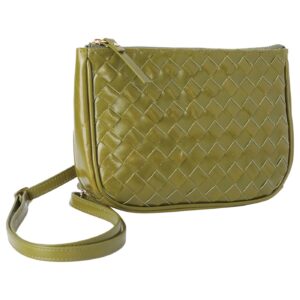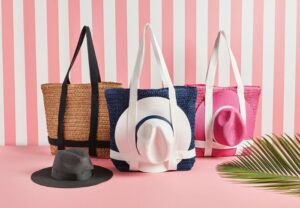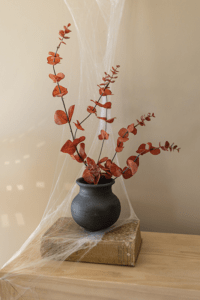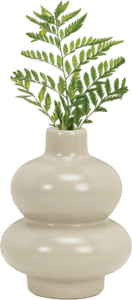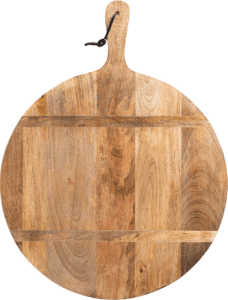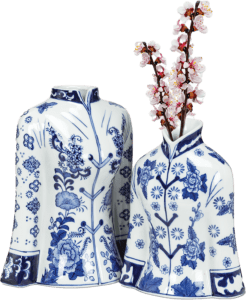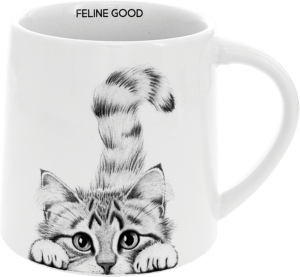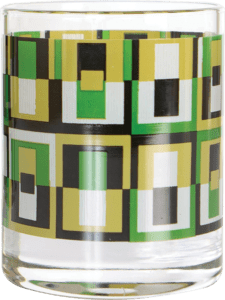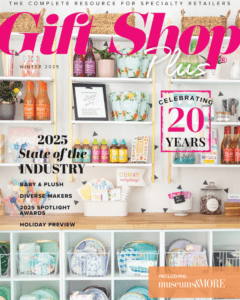Global Goods
Fair Trade Checklist
Considering going the fair trade route? Here are some suggestions to keep in mind:
Check out the Fair Trade Federation's website which features a searchable directory of more than 270 companies that have been evaluated for their commitment to fair trade.
Ask questions of your vendors: How is it sourced? How are the communities changed by this buying decision?
Understand the difference between the two kinds of fair trade recognition. The Fair Trade Federation screens companies for their commitment to fair trade but doesn't certify them. Certification, which is for agricultural products such as coffee and tea, is specific to a product, not a company, and is sought by the business that is manufacturing a particular item.
Socially responsible consumerism
The way Laura Wendell tells it, when customers buy her store’s offerings, there are three factors that work together to seal the deal: the products are beautiful; they are functional and well-made; and they have an associated feel-good factor. Wendell sells thousands of fair trade products made around the world, through her store One World Market based in Durham, NC.
Wendell knows her customers like beautiful products but pretty alone is not enough. For example, if they pick up colorful, satin jewelry roll cases made in India, it’s because these products are not just beautiful but they are also functional and well crafted, Wendell says.
Like Wendell, selling products that celebrate diversity and the world’s many cultures is a way of offering innovative gifts to your customers. These products can run the gamut, including exotic and unique home décor and intricately-designed and eco-friendly clothing to one-of-a-kind jewelry, clever bilingual greeting cards, handmade musical instruments, colorful paintings and other wall hangings, original music CDs and certified fair trade coffee, tea and chocolate.
In an increasingly globalized world, fair trade is an integral part of doing business especially in gift retail. Customers who are increasingly asking questions about the hows and wheres of products feel good about buying a product that rewards hard work no matter where it takes place around the world.
The story behind a product—the artisan or community from which the item is made and how the sale of their products are of particular benefit to the creator—appears especially important to buyers, industry experts say. “It seems the American consumer is paying more attention to who is making their product and where it’s coming from,” says Renice Jones, co-founder of Global Crafts, an Edgewater, Fla. fair trade wholesaler. “And, consumers are definitely becoming much more aware of what products are made of.”
This is the appeal of fair trade products to the customer: They can feel good about buying the products because they can rest assured that the products benefit artisans living in developing countries. What exactly is fair trade? It’s a growing, international movement which ensures that producers in poor countries get a fair deal, according to World of Good, an Emeryville, CA non-profit focused on building strategies to substantially improve economic and social conditions for millions of artisans and their families living on less than $4 per day. This means a fair price for their goods (one that covers the cost of production and guarantees a living income), long-term contracts that provide real security; and for many, support to gain the knowledge and skills that they need to develop their businesses and increase sales.
Going the fair trade route
 Fair Trade Labelling Organizations International reports that sales of fair trade products are on the rise. According to the non-profit organization based in Germany, the sales of fair trade products across the world have seen an average of 40 percent year-over-year growth since 2004. The organization is part of a worldwide network of fair trade organizations actively involved in supporting producers, raising awareness and campaigning for changes in the rules and practices of conventional international trade. Some of the strides the organization have made include developing new fair trade-labelled products to the benefit of thousands of new producers and workers, as well as continuing to offer financial support to the most disadvantaged producers and workers in order to become fair trade-certified.
Fair Trade Labelling Organizations International reports that sales of fair trade products are on the rise. According to the non-profit organization based in Germany, the sales of fair trade products across the world have seen an average of 40 percent year-over-year growth since 2004. The organization is part of a worldwide network of fair trade organizations actively involved in supporting producers, raising awareness and campaigning for changes in the rules and practices of conventional international trade. Some of the strides the organization have made include developing new fair trade-labelled products to the benefit of thousands of new producers and workers, as well as continuing to offer financial support to the most disadvantaged producers and workers in order to become fair trade-certified.
Jones of Global Crafts agrees that fair trade products are selling well. “Fair trade empowers many people in the world. It’s becoming a buzz word,” she says.
Incorporating fair trade products into your store can boost your bottom line as well as help create a feeling of goodwill among your staff and your customers, says Priya Haji, board chair and co-founder of World of Good. Buyers are able to purchase not only something gift-worthy but also something with a story behind it, Haji says. “When customers are buying something, they are not only looking at the tangible attributes, they’re looking for the intangibles,” she says. “It’s the ‘what is it about this product?'”
Haji, whose company works with more than 100 producer communities in 34 countries, believes you can change the world by introducing fair trade products to your customers. “The way we spend and what we buy, it is shaping the world,” she says. “It’s about creating the world we want and realizing what we buy and what we spend is part of our action in the world. Fair trade is really the assurance that this dollar really benefits that person behind the product you bought.”
 Julie Klear and Moulay A. Essakalli, are the husband and wife design team behind Zid Zid Kids, a children’s clothing and playthings wholesaler based in Cambridge, MA. They agree that there is an increased awareness among customers about where the products they buy, are made and how. “This is even more evident for new parents,” Klear says. “They choose their purchases much more carefully and want their ethics to reflect in what they choose, not only for themselves, but for their children’s sake as well. People also want to make sure their purchases are making the right ‘impact’ or ‘contribution,’ economically, socially, environmentally.”
Julie Klear and Moulay A. Essakalli, are the husband and wife design team behind Zid Zid Kids, a children’s clothing and playthings wholesaler based in Cambridge, MA. They agree that there is an increased awareness among customers about where the products they buy, are made and how. “This is even more evident for new parents,” Klear says. “They choose their purchases much more carefully and want their ethics to reflect in what they choose, not only for themselves, but for their children’s sake as well. People also want to make sure their purchases are making the right ‘impact’ or ‘contribution,’ economically, socially, environmentally.”
Every Zid Zid Kids product is designed and produced in Marrakech by Moroccan artisans.
A conflict with buy local?
That a growing number of American consumers are concerned about the origin of a product could also prompt shoppers to seek locally made items as opposed to products made abroad. After all, fair trade or not, some shoppers simply are more comfortable spending their money on products they know are American made.
Even so, those in the fair trade business say a market remains for products made abroad.
“Most fair trade handmade products stem from cultures and traditions which are not represented in North American production.” says Carmen K. Iezzi, executive director of the Fair Trade Federation, a Washington, D.C.-based association of businesses and organizations who are fully committed to fair trade.
Iezzi also believes the ever-growing fair trade market can ultimately benefit the U.S. economy. “Our members represent small, local companies who use their entrepreneurial skills to benefit both their immediate communities and communities around the globe,” she says. “As North American fair trade organizations grow, they employ more and more individuals in their communities and create jobs here.”
Diversity of products
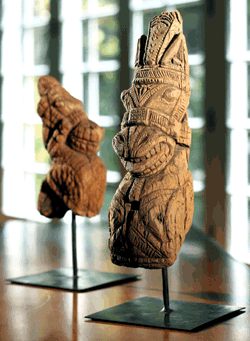 Popular multicultural and ethnic products from around the world include clothing, gifts and décor, “in particular, pillows, tapestries, quilts, blankets and tabletops,” Iezzi says.
Popular multicultural and ethnic products from around the world include clothing, gifts and décor, “in particular, pillows, tapestries, quilts, blankets and tabletops,” Iezzi says.
Handmade jewelry is big now as well, says Haji, of World of Good. For example, the wholesaler Aid Through Trade commissions fair trade glass jewelry from artisans in Nepal. The company also commissions other kinds of products such as silks from artisans in Vietnam.
Then there are handcrafted baskets (made of wire, palm and other materials) made in Africa sold by many wholesalers including Bolga Baskets International and Baskets of Africa. The wholesaler Bridge for Africa based in San Francisco, also wholesales a variety of baskets and other products including baskets handcrafted with metals and beads.
The Austin, TX-based company Handmade Expressions wholesales a wide variety of fair trade products from India: from accessories like handcrafted silk scarves, jewelry and handbags to home décor accents such as cushion covers. Furniture from around the world is also a specialty of Eastern Breeze. The wholesaler, based in Pacific Palisades, CA, also specializes in bringing new uses to products from around the world. For example, one of their products, the Building Block Doorway Shrine, can be used as a home accent and is salvaged from the remains of dismantled old homes in India.
Fair trade is also at the heart of Lucuma Designs, says Liz McTeer, customer service manager and marketing associate for the Sarasota, Fla. wholesaler. Partnering with artisans who create eco-friendly products is also important, she says. The company wholesales a variety of products from gourd ornaments to finger puppets. “We’re trying to focus on renewable resources and being more sustainable all around,” says McTeer, who cites a fair trade industry mantra of “For the people, for the planet.”
Gifts for the American melting pot
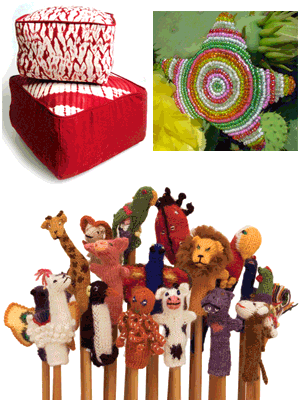 Gifts that speak to other cultural segments here in the United States are also big sellers. Just ask Lena Hayden, whose Nos Vemos Greetings company in Topeka, KS targets Mexican-American consumers. Her bilingual greeting cards feature both English and Spanish on the front of the cards.
Gifts that speak to other cultural segments here in the United States are also big sellers. Just ask Lena Hayden, whose Nos Vemos Greetings company in Topeka, KS targets Mexican-American consumers. Her bilingual greeting cards feature both English and Spanish on the front of the cards.
“Everyone has a friend or a co-worker or family member who speaks Spanish,” says Hayden, who was inspired to create the cards after living as an exchange student in Mexico. “I wanted to make the English just as dominant as the Spanish on the front… It’s really bridging a gap. It’s bringing the two languages together literally.”
Mexican-American consumers are most likely to buy Nos Vemos Greetings because of the combined English and Spanish sentiment on the front of the card, she says. “Millions of Mexican-Americans have lived in the U.S. for many generations and their primary language is English,” she says. “These cards are an outlet for them to express themselves in a creative way that represents both of their cultures.”
Hayden believes gifts that address the many cultural segments across the United States will continue to sell increasingly well. “There are so many bilingual consumers out there,” she says, “and the American marketplace has not tapped into this as much as they can. The possibilities are endless and the market is really huge.”
Marketing ideas
More than any other category of gift retail, story telling is a key element in selling fair trade products from around the world, effectively. “People want to feel connected to others through their purchase, particularly in gift and décor,” says Kevin Frahm, who serves as executive director of The Mission Marketplace, a non-profit gift shop in Chelsea, MI. “So we do a lot here to share the stories.”
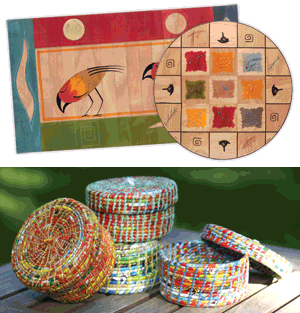 Indeed, a walk through Mission Marketplace is a journey of sorts to far-flung villages and communities. Perusing the shop, shoppers learn, through tags placed on items, of the artisans behind the creations. It may be the women in Nepal who, having no control over their finances, have started their own business using recycled sari yarn and cuttings to create items such as gloves and hats. Or the Women’s Multipurpose Cooperative, which was started to create jobs for people who moved into the area around Baguio City in the Philippines hoping to work in the copper and gold mines. The women are skilled weavers, using mostly backstrap and upright wooden looms. They also create crocheted and knitted items, recycled baskets from newspaper, as well as Christmas decorations made of pine needles and other materials.
Indeed, a walk through Mission Marketplace is a journey of sorts to far-flung villages and communities. Perusing the shop, shoppers learn, through tags placed on items, of the artisans behind the creations. It may be the women in Nepal who, having no control over their finances, have started their own business using recycled sari yarn and cuttings to create items such as gloves and hats. Or the Women’s Multipurpose Cooperative, which was started to create jobs for people who moved into the area around Baguio City in the Philippines hoping to work in the copper and gold mines. The women are skilled weavers, using mostly backstrap and upright wooden looms. They also create crocheted and knitted items, recycled baskets from newspaper, as well as Christmas decorations made of pine needles and other materials.
“People tend to linger here. They like to hear the stories,” Frahm says. “They like to reminisce about their own travel history.”
Creating an ethnic section in your store—one wall or corner, for example—is one way of integrating multicultural and fair trade products into your shop. Products also can be shown throughout your store, a tactic McTeer of Lucuma Designs says can work rather well.
One of Lucuma Design’s most popular items, finger puppets retailing for $3 to $6 a piece, sell well when placed not only in a large basket next to the cash register, but also when displayed throughout the store to demonstrate their many uses. “They can be used as pencil tops and Chapstick covers,” she says. “Don’t limit yourself on how you display them.”
A global community
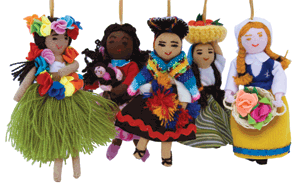 Frahm suggests interacting with your community as a means to market your multicultural products. For him, it means working with the local library on a monthly book club featuring a book with an international topic. He’s also been known to work with local schools on a “geography night” during which he speaks to students about the artisans and their communities around the world, whose creations are showcased in his shop.
Frahm suggests interacting with your community as a means to market your multicultural products. For him, it means working with the local library on a monthly book club featuring a book with an international topic. He’s also been known to work with local schools on a “geography night” during which he speaks to students about the artisans and their communities around the world, whose creations are showcased in his shop.
Demonstrating a commitment on both a global and local level will strike a chord in shoppers and will keep them coming back for more, Frahm believes. “It offers community and it offers connection,” he says.
Interestingly enough, the best-selling item in Frahm’s store is a set of six mahogany animal figurines that are carved into “chairs” that go along with a “table” carving in the shape of Africa. Frahm says the set embodies the spirit of fair trade around the world. “It’s what fair trade is all about,” Frahm says, “It’s about everyone having a seat at the table.”

